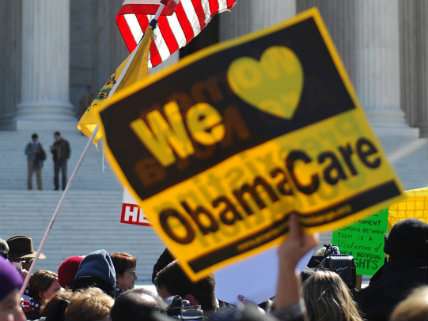Newly Appointed Obamacare Exchange Chief: "Part of me thinks that this year is going to make last year look like the good old days."

It would be a challenge for Obamacare's second open enrollment period, which begins in November, just after the elections, to go any worse than last year's, especially when it comes to the health insurance exchange technology that failed so miserably during the first few months of last year's rollout.
Many of the consumer-facing issues were eventually ironed out, and the performance during the late-breaking sign-up surge at the end of this year's open enrollment period in March was not spectacular, but basically acceptable.
Most observers, then, think that this year will go better. At the very least, the technology problems that crippled the federal exchange last fall won't persist. But that doesn't mean that everything will go off without a hitch. Indeed, there are multiple signs that this year's open enrollment period could be something of a mess too.
Here, for example, is what the recently installed overseer of the federal exchange system recently told The New York Times about his expectations for the second open-enrollment period.
"In some respects, it's going to be more complicated," said Kevin Counihan, the former chief executive of Access Health CT, Connecticut's online marketplace, who was just named as the head of the insurance marketplaces for the federal government. Connecticut's marketplace was among the most successful state-based exchanges, sharply reducing the number of uninsured in the state. "Part of me thinks that this year is going to make last year look like the good old days."
One added complication is that last year the exchanges and participating insurers only had to deal with new sign-ups. This year, there are expected to be millions of new sign-ups, along with people changing plans and renewing existing coverage. And guess what? The particulars of managing the renewal process apparently haven't been worked out yet. Back to the NYT:
People will be renewing at the same time that others are enrolling for the first time, starting a week and a half before Thanksgiving, on Nov. 15. To ensure that they have a new plan by the beginning of the year, those who renew will have to sign up by Dec. 15. Exactly how the renewal process will work has not yet been determined.
"We're still waiting on the details of the process," said Paula Steiner, chief strategy officer for Health Care Service Corporation, which offers Blue Cross plans in five states. "We haven't gone through any testing yet of any changes to the system for 2015."
"I think there's a possibility that there's equal or more confusion this fall," she said.
Will this create a rollout-level debacle? I doubt it, but it's not a promising sign. Remember that this time last year, the administration was promising a working launch, despite warnings from the Government Accountability Office and others that the project was very much not on track. And part of what came out afterwards is that the system simply hadn't been tested. Some of the individual parts worked in demonstrations, but no complete system test was ever run, so they never really knew how, or if, it would all fit together.
Fitting all the pieces together is, of course, a major part of the challenge. And it's not just the federal government trying to figure out how to make things work. In California, which is running its own exchange and by most accounts has one of the more successful state-based implementations, the renewal process looks like, well, an ungainly bureaucratic process. According to the Los Angeles Times:
The state-run marketplace and its 10 participating insurers want to simplify the task of renewal and save consumers from applying all over again. For instance, people will be automatically renewed into their existing policy by Dec. 15 unless they want to change. That's similar to how it is for employees covered through work.
But a cumbersome two-track process outlined by California officials could complicate matters, some consumer advocates warn. Policyholders will have to sort through separate notices from the state and their health plan in the weeks ahead.
One crucial detail — a person's government subsidy amount for 2015 — may not arrive until late in the year. Nearly 90% of Covered California's enrollees received federal money to lower their insurance bills.
These are just some of consumer issues that will be felt by individuals trying to use the exchange. Premiums will go up for many individuals, and subsidies will change based on income and other factors. It's going to be complicated, even for those who are already in the system.
And there's the small issue of the federal exchange back-end, the part that communicates crucial payment information to insurers, not being finished. Those systems were supposed to be complete last year, then early this year, and then before this summer, but have now been pushed off until sometime next year—after the second open-enrollment period is through.
Federal health officials recently requested bids from tech contractors to continue work on the back end, but announced this week that Accenture, the firm currently managing technology for the federal exchange, which replaced the original contractor earlier this year, would have its contract extended until July of 2015.


Show Comments (19)